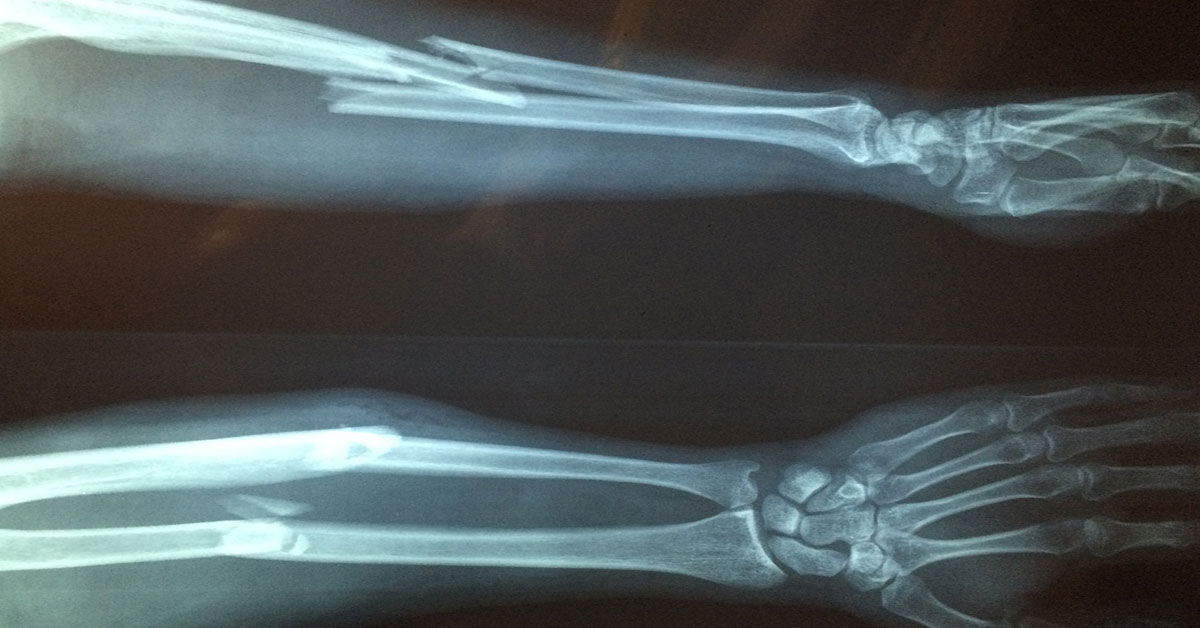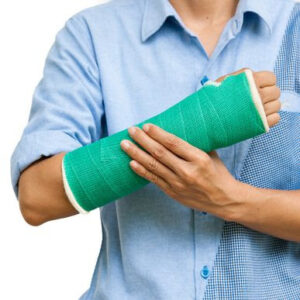Fractured Arm is Healed. Still Painful or Weak?
Over 590,000 arms are fractured each year in the U.S.
The three most common types of arm fractures are:
- distal radius
- distal ulna
- proximal humerus
The most common cause of fractures is falling, or being hit, such as in sports injuries.
The majority of forearm (radius, ulna) fractures occur in children under the age of 18, and adults over the age of 65.
You fell and broke your arm. Now it feels weird, hurts or is weak. What else might be going on?
There are so many ways you might have broken your arm–falling on the ice, tripping while distracted, or something falling against you.
Usually, the arm is immobilized in a cast for several weeks. Once the cast comes off you expect to return to normal over the course of several weeks. Adults are often prescribed occupational therapy, even though children would benefit too.
We meet so many people who have had a broken arm! Sometimes the fracture was years ago, but still causes issues for you.
3 common issues related to broken arms
These are the most common lingering issues that we find post-arm fracture:
- Lack of strength
- Sensation of tightness
- Pain at the wrist, elbow or shoulder
If you’ve had any of these, you’ve likely tried chiropractic or occupational therapy, but with limited results. Time to try another approach.
The key to finding the complete solution for feeling ‘right’ again is understanding how the immobilization turned off your muscle coordination, and how your body absorbed the forces during the original accident are keys to finding a lasting solution.
This analysis is fundamental within the Bridging® process and is described below.
What really happens to your arm when it breaks and while it’s healing?
In order to understand what happens to you, we need to think about how your forearm is supposed to function. Here are some key aspects to how the arm works well:
- Strength: The hand and finger strength are derived from the muscle strength in the forearm via the tendon interconnections to the hand.
- Flexibility and Mobility: The wrist should move in three ways — up/down, side to side, and turning up and down. This motion trickles up into the many muscles of the forearm.
- Core Support: The elbow is a key connector of the forearm between the wrist and shoulder. Its job changes depending upon being flexed or straight. It really is like a gear box!
There are two parts to full recovery
Most orthopedic professionals look at movement of the wrist and elbow as the markers of being fully healed. We find there are two additional aspects to consider:
- The flow and multi-directional transitioning between each moving segment at the hand, wrist, and forearm.
- Restricted and jammed transitions at the elbow, shoulder, or core, related to the original force which broke the arm.
Interconnection is the key!
When your forearm is immobilized for several weeks, the biggest impact is the loss of the neuromuscular interconnections at the wrist and elbow. It’s a train wreck with several layers of subsequent affects.
- Transitions: The muscles at the wrist and elbow lose much of their ability to transition in the intricate ways they were used to. They either go lax or stiffen up, so your wrist is either too stiff or too floppy.
- Rotations: The forearm immobilization freezes the essential rotation of the radius which normally allows your hand movement to link to the shoulder and core. Besides coordination being impacted, strength is compromised.
- Core Support: Force from landing on the arm skews the transition at the elbow and shoulder which can cause pain when doing normal activities.
About the three issues specifically
Let’s look at each of the three typical issues and break down how the Bridging® Technique uniquely helps you find relief:
- Stiffness or limited range of motion: The interconnections of the wrist and elbow are easily restored by using the gentle Bridging® stretches to restore pairing of various muscle groups. Flex/extend, supinate/pronate, and lateral/medial deviations are individually restored.
- Weakness: The wrist and forearm movements above are linked to the elbow, shoulder and core to restore strength and endurance.
- Wrist, elbow or shoulder pain: Bridging® restores the correct relationships to muscles connecting across the wrist, elbow and shoulder allowing any torque or stress to disappear. By restoring the flow of movement in multiple directions, the transitions across joints are smooth and stress-free. Stress-free usually means pain-free!
More to your full recovery …
At The Bridging® Institute our clients are often surprised by how fast they improve. Uniquely, our approach goes back to early development as the secret.
Re-creating early layers of muscle and joint interconnections is the roadmap for sustainably resetting you or your child’s body after accidents, illness or growth. Bridging® rebuilds the original movement foundation; your daily activity reinforces the better function.
Wondering if Bridging® can help you or your child feel and function better after a broken bone? Fill out our intake form and we’ll get back to you with insights on how Bridging® can help. Virtual or in-office sessions are two options we offer to get you back to feeling your best.


